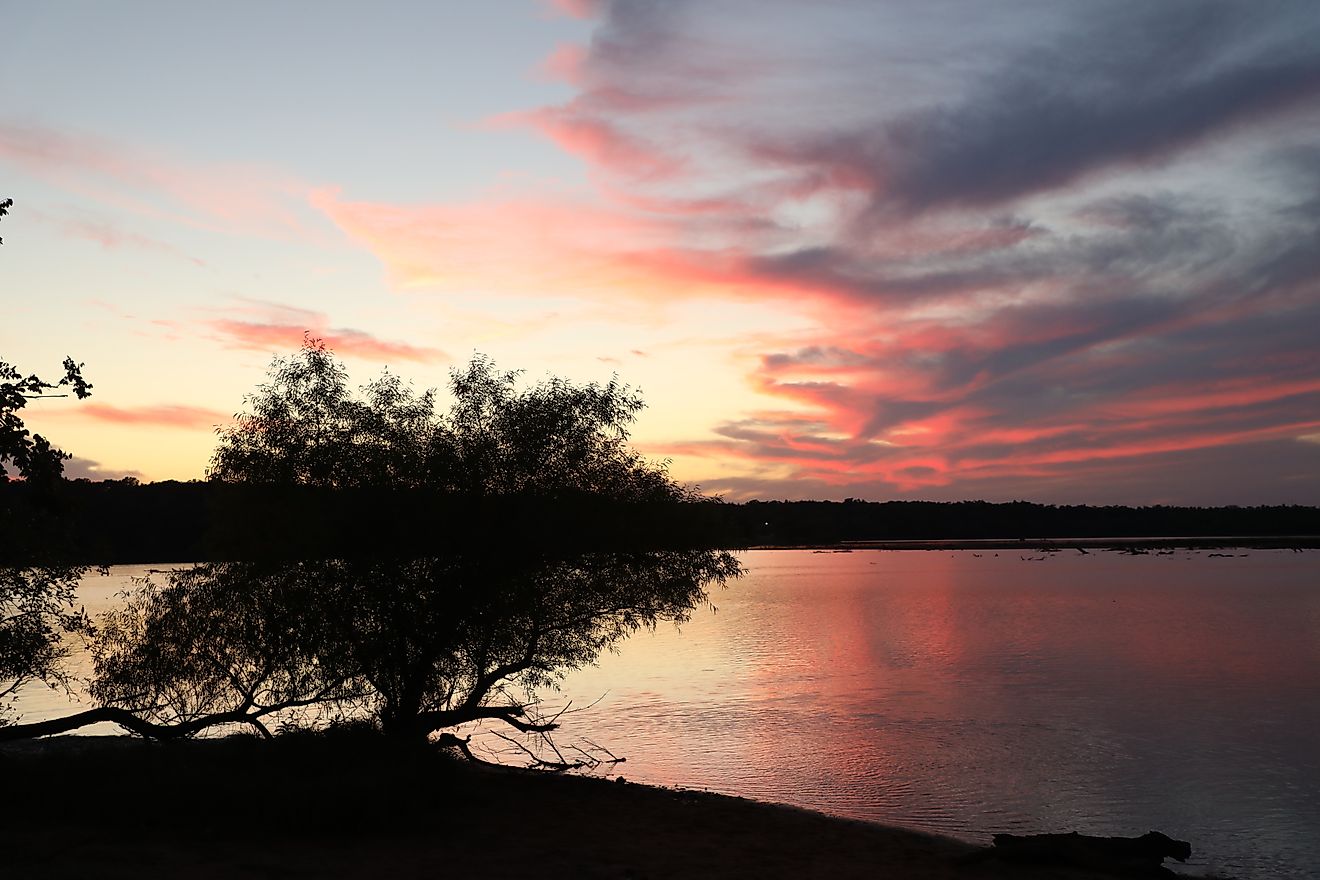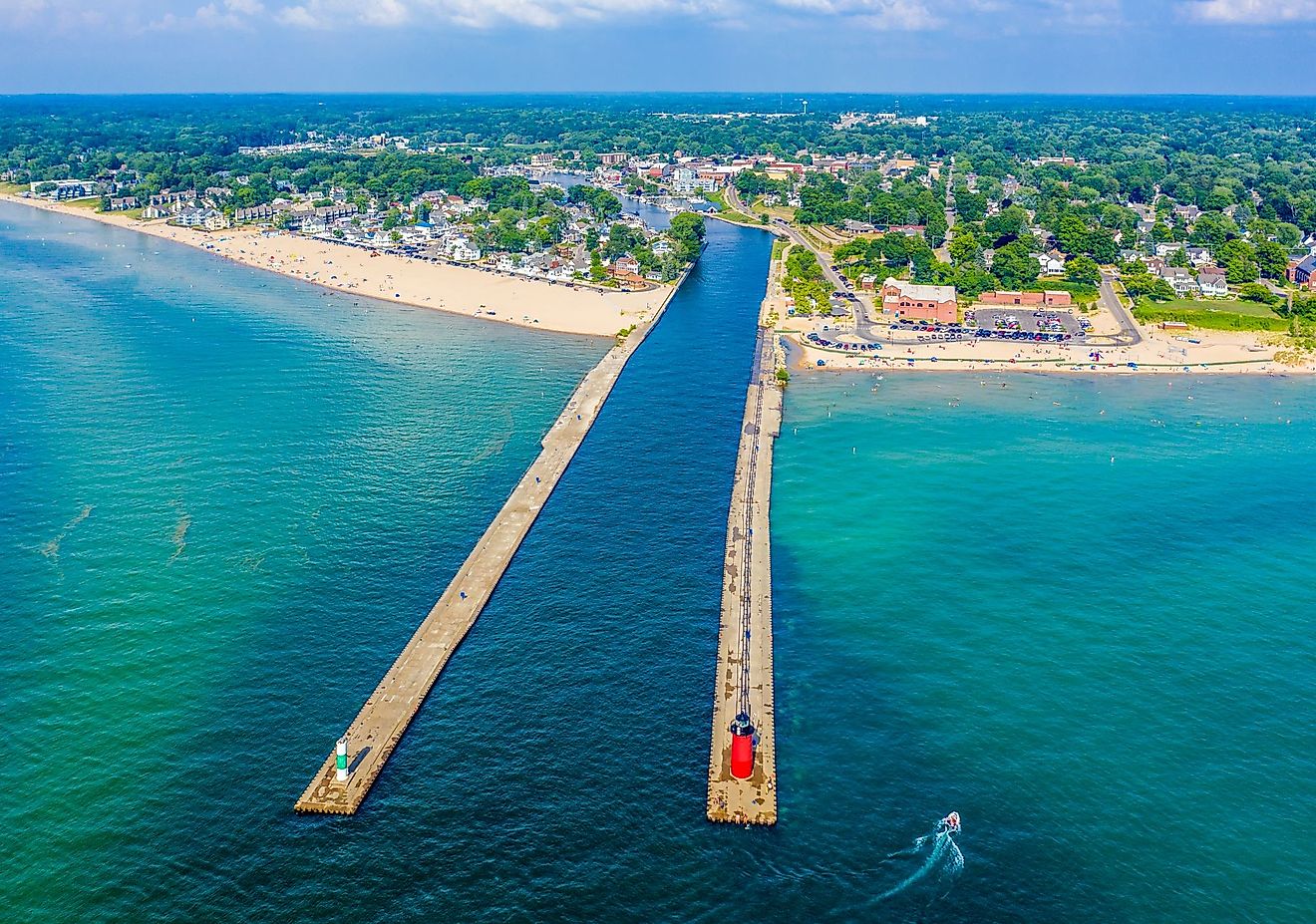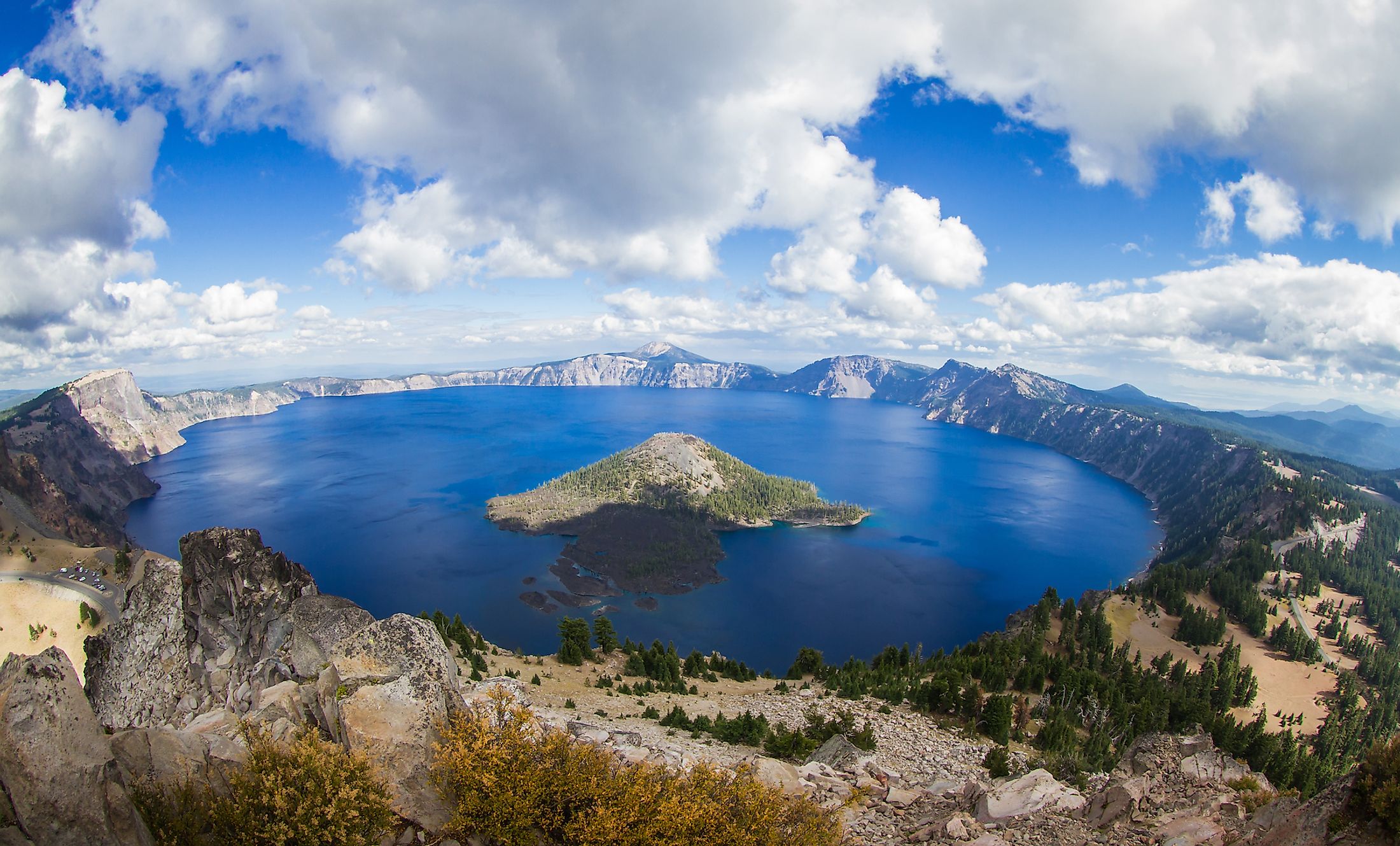
Crater Lake
Also referred to as “Giiwas” in the native Klamath language, the Crater Lake is a clear, deep-blue color lake situated within a vast volcanic caldera in the Klamath County in the south-central part of the US State of Oregon. The Crater Lake forms the principal geographical feature of the Crater Lake National Park. It is located approximately 130km northeast of the city of Medford and 97km northwest of the city of Klamath Falls. The Crater Lake and the surrounding park areas offer several recreational opportunities such as fishing, hiking, snowshoeing, cross-country skiing, biking, camping, etc.
Geography Of Crater Lake
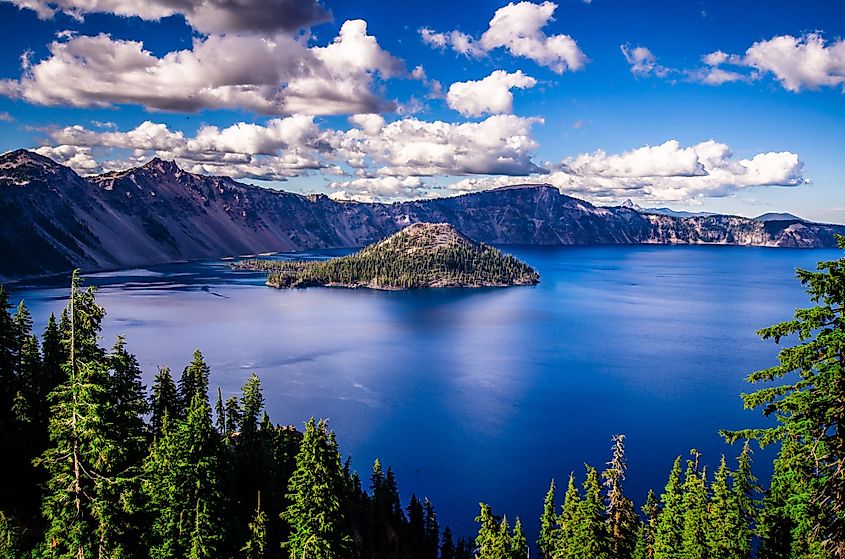
Covering an area of 53 sq. km, Crater Lake has a length of 9.7km and a maximum width of 8.0km. The lake partially fills a 655m deep caldera and holds a total volume of 18.7 cubic kilometers of water. Situated at an elevation of 1,883m, the Crater Lake reaches an average depth of 350m and a maximum depth of 594m. Based on its average depth, Crater Lake is considered the world’s third deepest lake and the deepest lake in the Western Hemisphere. However, based on its maximum depth, Crater Lake is regarded as the world’s ninth deepest lake and the deepest lake in the United States. The lake also contains high levels of dissolved salts, and its average pH ranges between 7 and 8.
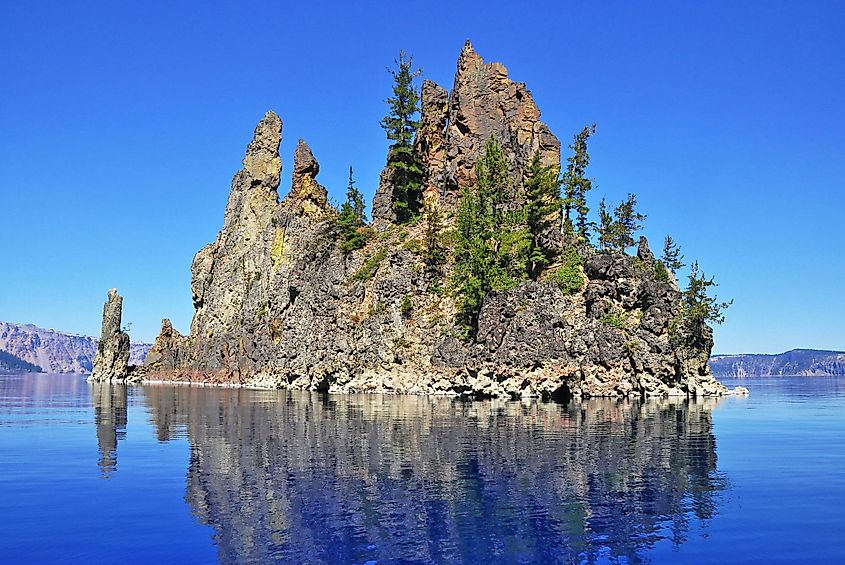
The Crater Lake is mostly well known for its striking deep blue hue and exceptionally clear water. The deep blue color of the lake is magnified by its contrast with the dull brown colors of the surrounding rock walls. The lake's exceptionally clear, mirrorlike water quality is because it is free of any suspended sediments and mineral deposits from other water bodies. It is directly fed only by precipitation and snowmelt. Evaporation and subsurface seepage help in maintaining the natural balance of the lake. Besides this, there are two small islands in Crater Lake. These include a natural rock pillar named Phantom Ship located close to the southern shore of the lake and the Wizard Island located close to the western shore of Crater Lake.
Formation Of The Crater Lake
Geological studies have revealed that the complex volcano Mount Mazama, located in the southern Cascades in a segment of the Cascade Volcanic arc, was formed by a series of volcanic eruptions over 400,000 years. Approximately 7,700 years ago, a massive volcanic eruption led to the collapse of Mount Mazama volcano, creating a vast caldera. It is believed that about 50 cubic kilometers of the volcanic rock rhyodacite erupted during this massive eruption. Later, subsequent lava eruptions created the Wizard Island, a central platform, Merriam Cone, and other volcanic features. As the caldera cooled, rain and snowfall accumulated and formed the lake. Geologists believe that it took about 720years to fill the lake to its present-day depth of 594m.
Climate
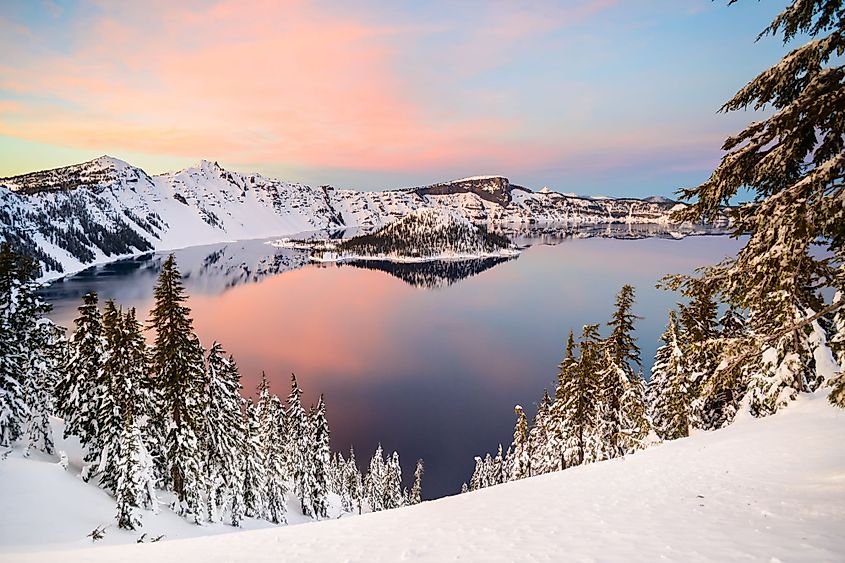
According to the Köppen climate classification, the Crater Lake National Park experiences a subalpine climate with warm, dry summers and cold, snowy winters. The hot season lasts from June to September, with July being the hottest month, having an average high temperature of 28.8°C and a low temperature of 10°C. The cold season lasts from November to February, with December being the coldest month, having an average low temperature of -5°C and a high temperature of 3.8°C. The dry summer climate of Crater Lake is due to the strong influence of the North Pacific High, while the cold winter season is due to the powerful influence of the Aleutian Low. Crater Lake is one of the snowiest places in the United States and receives an annual average snowfall of 505 inches and a maximum snow cover averaging 139 inches.
Ecology Of Crater Lake
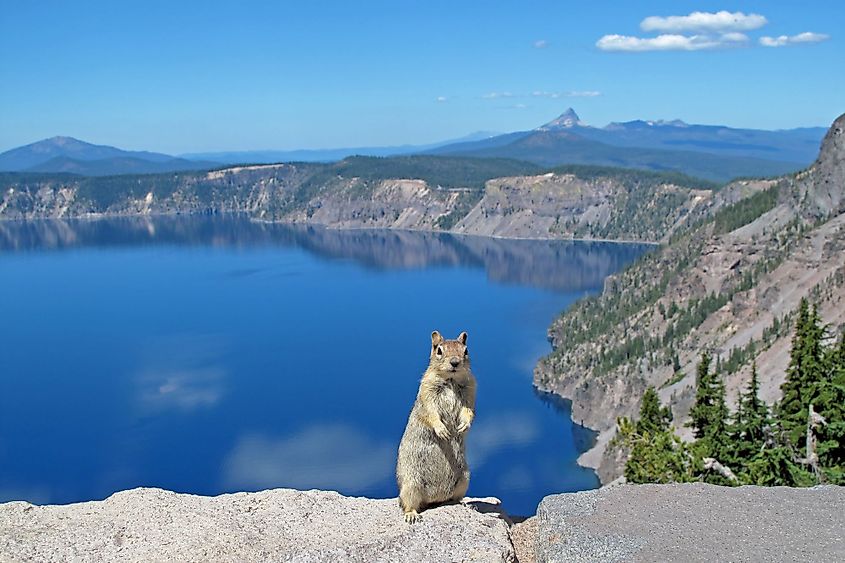
Since Crater Lake was formed due to the collapse of Mount Mazama, it initially contained no fish species. In 1888, William G. Steel decided to stock several fish species in the lake, of which only two species survived: the rainbow trout and kokanee salmon. In addition to these nonnative fishes, the lake contains Mazama newts, crayfish, worms, insect larvae, moss, phytoplanktons, and zooplanktons. The Crater Lake is also well known for the “Old Man of the Lake,” which is a 9m tall mountain hemlock log that stands vertically about 1.2m above the water of the lake. The Crater Lake area is home to many mammals as well as many avian species, including eagles, owls, insectivorous birds, songbirds, hawks, etc.
Visiting The Crater Lake
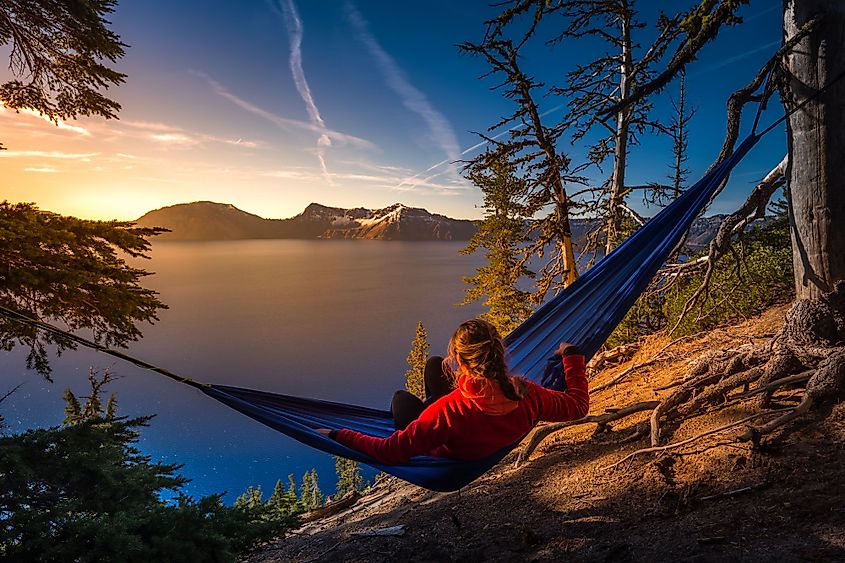
The Crater Lake and its surrounding National Park area offer several recreational opportunities for the visitors, including fishing, biking, snowshoeing, cross-country skiing, camping, boating, etc. The Crater Lake National Park features many hiking trails, including the Garfield Peak Trail, the Cleetwood Trail, etc. The Crater Lake and the remnants of Mount Mazama can be clearly seen from a 55km road named Rim Drive that surrounds the caldera. Swimming is also permitted in Crater Lake, but there is only one place where it is considered safe to swim in the lake. Swimmers can reach this place by following the Cleetwood Cove trail that leads them to the shores of the lake.
Brief History
Archaeological findings have revealed that the Modoc and the Klamath tribes initially inhabited the lake area. The oral history of the Klamath tribes describes a story of their ancestors who witnessed the collapse of Mount Mazama and the subsequent formation of the lake. The “Mysterious Lake” is revered as a sacred place by these tribes who also regard it as an “Abode of the Great Spirit.” Therefore, shamans and other Klamath people often visited the lake during vision quests. On June 12, 1853, the American prospector John Wesley Hillman became the first non-Native American explorer to discover Mysterious Lake. He named it the “Deep Blue Lake.” However, the lake was renamed several times in the subsequent years and was finally referred to as “Crater Lake.”





